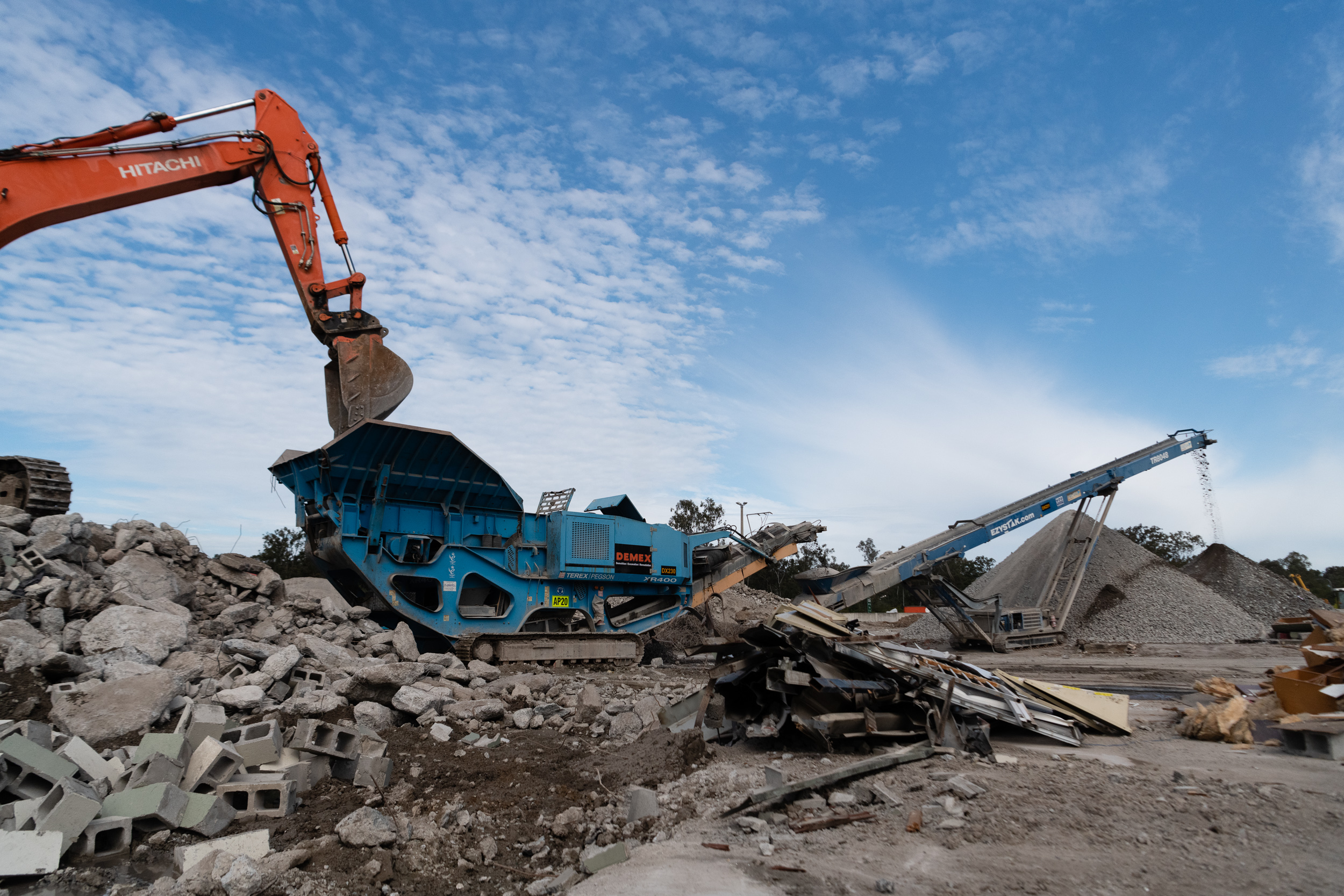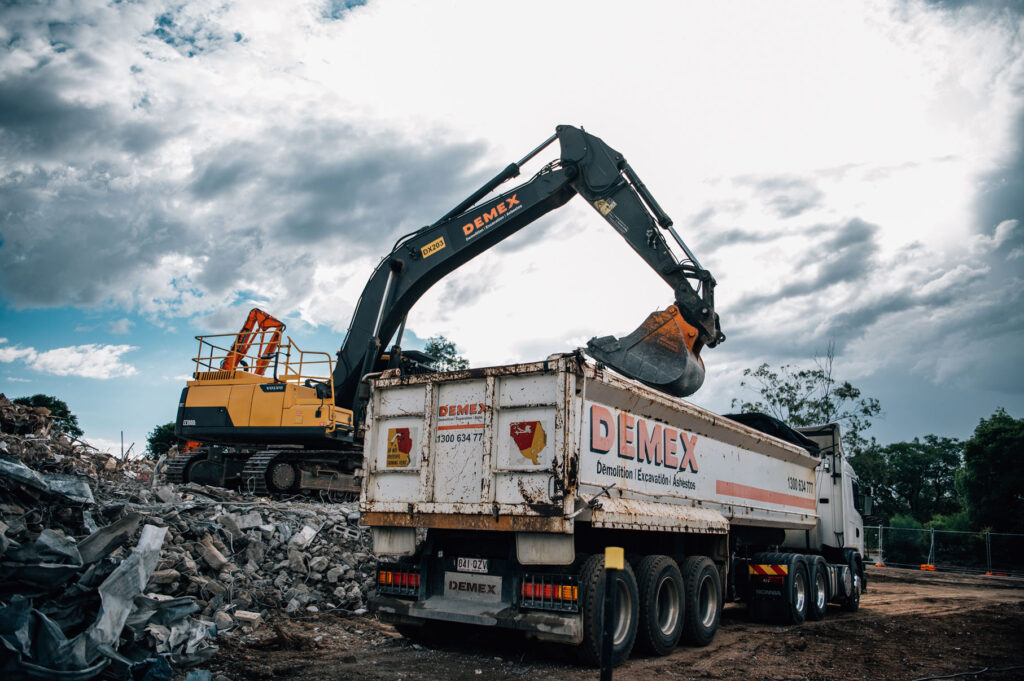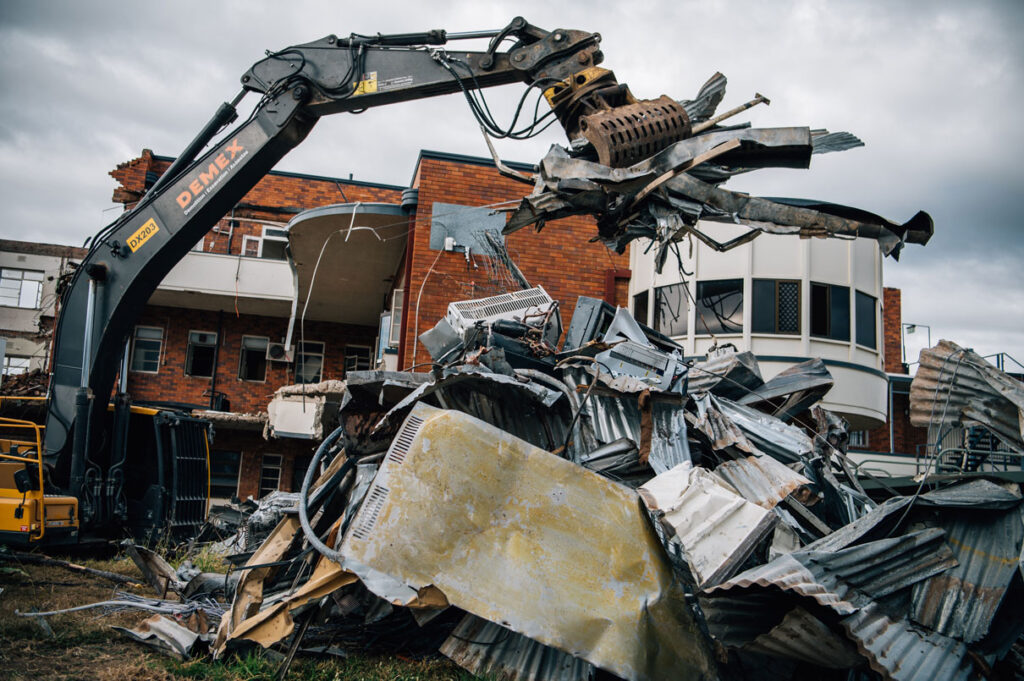Do we need a new way of looking at construction and demolition waste?

The management of construction and demolition waste has been on the radar of government1 and industry for well over a decade, with tangible measures in place to review and continually improve. Legislation, regulatory frameworks, targets, international bans on waste exports, education, and changes in practice together have contributed to changes in the ways things are done in our industry. Most would agree the changes have many associated benefits despite the obligations, which at times probably seem somewhat onerous.
Unsurprisingly, demolition contractors are at the pointy end of waste management and recycling on demolition projects. After all, it is our task to identify the materials to be disposed of, and how and where this disposal should occur in keeping with regulations and safe practices. Waste and risk management plans are integral to this process, outlining the steps to remove, and where possible, recycle all manner of materials. Concrete, wood, metals, asbestos, hazardous chemicals, steel, roofing material, asphalt, and soil are just a few that must be considered on a demolition project.
In many ways, the current thinking on construction and demolition waste and recycling on demolition projects takes an ‘after the event’ approach. In the vast majority of cases, it only comes into consideration when it’s time to demolish a structure. This is probably as much a function of awareness and industry maturity, however as things evolve, there is growing consensus there could be a better way. In simple terms, perhaps the best way to deal with construction and demolition waste is to not deal with it at all.
Sound far-fetched? Well, the impetus to effect change can be found in calls from many corners of government, industry, and community, with a particular emphasis on reducing CO2 emissions. Regardless of your position on this topic, and even putting aside the push to CO2 emission reduction, there is a logic to closing out the construction and demolition cycle by bringing forward considerations around waste recycling and management on demolition projects.

A recent article on the BBC highlighted this very issue. In short, it presents the idea that construction and demolition waste can be reduced or avoided by front end planning on projects, that is, in the design phase. While demolition is not an industry that is typically equated with ‘being green’, adopting this approach makes good sense, not least because demolition contractors are positioned ideally to do this work.
Getting started may not be as complicated as we think. What it requires is a slight adjustment of our understanding around an asset’s life cycle. Instead of thinking about waste management and recycling at demolition, these factors should influence design too.
Practically, there are different means by which this can be brought to bear on the demolition end game. For a start, those involved in design and demolition can get together and share knowledge and experience on the challenges associated with the removal and recycling of materials. One good example of how this has played out in our industry is asbestos. With a better understanding of the hazards from asbestos, it is no longer permitted for use in building and construction. Although it’s not used now, project owners and demolition contractors must still deal with it every day, in most cases, many years after a structure was built. Apart from asbestos’ health hazards, there are waste management concerns for asbestos, for which there is an appropriately robust framework.
Fortunately (or maybe unfortunately), we don’t need to cast forward 10, 20, or 30 years to see a repeat of the disposal challenges associated with other building and construction materials. Take expanded polystyrene (EPS) for example, which is used widely in construction. Appealing for the fact it does not rot or attract pests, EPS has been a popular choice for insulated wall panels, roofs, and floors, facades, and as a form fill on civil projects and houses. Although it is not hazardous in the same way as asbestos, EPS does come with its share of issues at demolition.
First, it is not always identified during project planning, and while every project has potential for the unexpected, the discovery of EPS means that targets and plans for recycling on demolition projects can be left to the side. For example, a bridge with a high percentage of concrete beams that have been form filled with EPS requires that the concrete and EPS are separated to allow concrete to be either crushed and repurposed or disposed of at landfill. This isn’t always possible, at least to the degree required to allow for the recycling of either material.
Another issue is with EPS taken to landfill. Polystyrene is mostly air and works in the same way as mattresses did when they were permitted in landfill; that is, once decomposed, it creates pockets of air that lead to sinkholes over time.

Even though EPS is a relatively recent material used in construction, we are finding our work involves an increasing proportion of EPS, which signals a growing need for its disposal. Does this mean EPS shouldn’t be used in construction? Not necessarily. But it should prompt all those involved in the life cycle of any type of structure and infrastructure to talk about costs in a holistic way (not just purely economic), and from a whole of life cycle perspective, with a focus on how these costs can be reduced or minimised.
Here are just a few suggestions on how waste can be minimised in construction and demolition projects.
- Recycled content – Source materials with a component of recycled content when it makes sense. Cost will always be a key driver in construction, however designers and engineers can consult with demolition contractors to understand the impact of materials selection at the opposite end of an asset’s life cycle, and how this can be used to advantage.
- Low waste focus – Identify and use products and materials with a low waste quotient. For example, modular components and building design that uses standard material sizes are ways that waste can be minimised in construction. Providing they endure, they may be used elsewhere after demolition too.
- Life cycle flexibility – The same principles can be applied to infrastructure design. Consider what a difference it would make if design provided for the whole or parts could be decommissioned or modified and then reused elsewhere with ease and minimal waste. Not only would this meet project cost drivers that are ever present, it would even go some way to meet expectations around emission reduction.
The bottom line is the targets set by every level of government aren’t going away, making it an imperative to have the kinds of conversations mentioned here sooner rather than later. When this happens, the value of demolition will be seen not only in terms of waste disposal and cost reduction, but as a valuable contributor to meeting those targets.
DEMEX is a leader in demolition waste recycling and management and sets targets for waste recycling on all major projects. Most recently we were awarded the 2021 Workplace Health and Safety Award for Health and Safety Excellence for our delivery of the Mulwala Project. We continue to expand our understanding of waste management and recycling processes to support our clients to meet their own sustainability targets and comply with government regulations. For more information on how efficient, safe, and cost effective ways to reduce waste from your demolition project, contact us directly on info@demex.com.au.


